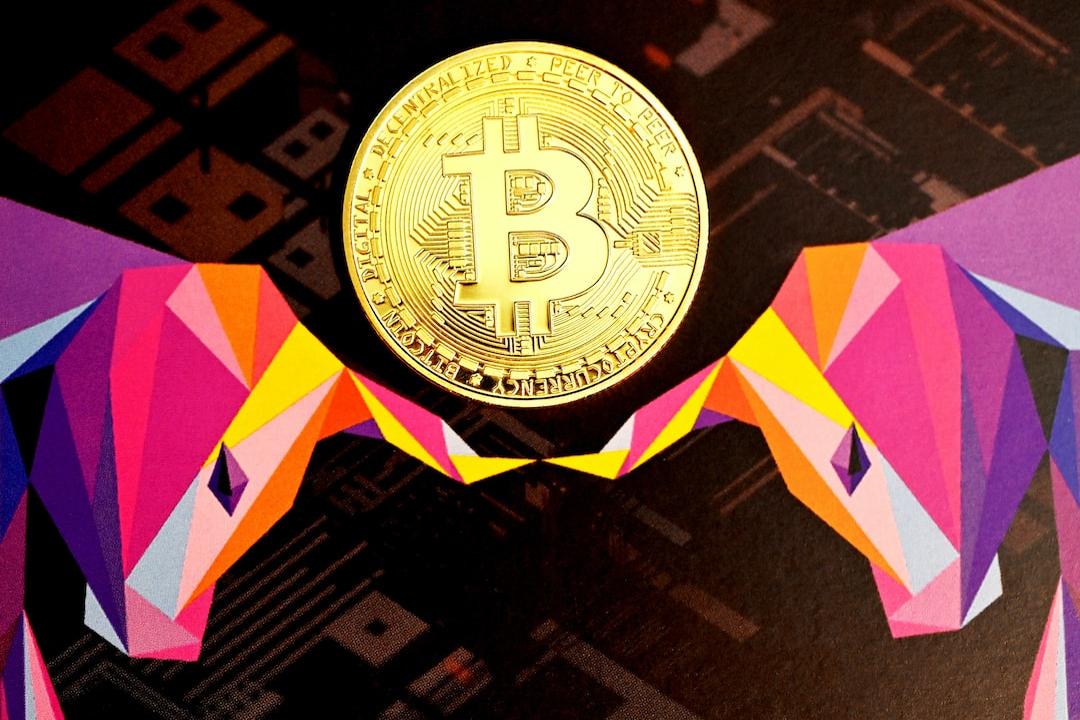In 2023, Solana made a stunning comeback to the center stage of the crypto world. From AI infrastructure to SocialFi applications, from meme frenzy to high-frequency trading protocols, the innovation and wealth effects of the Solana ecosystem have attracted the attention of the entire industry. On the other hand, Ethereum developers and communities find themselves in a subtle split—disputes over team structure, bottlenecks in EVM performance, and sluggish development efficiency have left many feeling uncertain about Ethereum’s future.
(Background Summary: Winners of Monad Madness Bangkok Revealed, A Quick Overview of 7 Award-Winning Projects)
(Background Supplement: Can Solana Truly Surpass Ethereum EVM Chains? Insights from Liquidity Pool Quality Regarding Public Chain Competition)
Monad, as one of the hottest public chains recently, is well-known for its feature of “parallel execution.” However, beyond parallel execution and innovations like Monad DB, it also claims to be the “fastest EVM.” Monad is not a simple copy of Ethereum’s code. It is compatible with the EVM ecosystem but possesses the high throughput and low latency characteristics of Solana; it was founded by former core members of Jump Trading and has attracted support from Solana star projects such as Phantom, Pyth, and Backpack.

Monad’s ambition is to allow EVM developers to achieve high performance without compromise, enabling Solana’s capital and innovation to take root in the EVM ecosystem. As the testnet approaches, we will see if Monad can become the next dark horse in the public chain arena.
**The Survival Rule of Public Chains: Performance, Ecosystem, and Wealth Effects**
Successful methods are uniform, while the reasons for failure are varied.
According to incomplete statistics, at least 10 public chain-level projects are set to launch tokens or testnets in Q1. In such an intensely competitive public chain race, how can one survive and build an ecosystem?
1. **True Product Orientation, Not Empty Narratives.**
The success of Hyperliquid validates this point—its Layer 1 architecture, designed specifically for financial markets, directly meets the needs of high-frequency traders with 200,000 TPS and sub-second latency. Public chains must solve real problems rather than rely on hollow marketing rhetoric.
A genuine product orientation requires a solid technical foundation. A simple fork is not enough for a public chain to stand out or maintain long-term competitiveness. Blindly pursuing “institutional products” while ignoring performance optimization and user needs will ultimately lead to market elimination.
2. **Developers Are the Lifeblood of the Ecosystem.**
Before launching its mainnet, Base established deep connections with developers through various types of popular science, incentives, and office hours.
Solana has built AI and SocialFi into new ecological labels through hackathons and financial support. The development path of public chains must closely align with market trends rather than being developed behind closed doors.
Events like Solana’s hackathon and Sui’s Pitch Day strongly support developers, injecting new vitality into the ecosystem and fully reflecting the importance of developers in the ecosystem.
3. **Wealth Effects Are Hard Currency.**
We must acknowledge that in the public chain race, operational importance is as critical as the technology itself. Looking back at previous projects like Movement/Berachain, they have also put significant effort into operational strategies, successfully attracting substantial attention.
The recent Solana meme/AI coin frenzy (such as BOME and WIF), the on-chain game token economy of Virtuals, and even the $DEGEN on Base chain prove that wealth effects are one of the core driving forces for attracting users. The recent performance of BNB Chain further confirms this—one “$TST” and one MyShell token offering directly stirred user emotions.
Public chains without a “wealth creation story” are destined to struggle in breaking through.
A combination of performance advantages based on technological innovation, robust support for developers, and wealth effects centered around assets must work together to achieve long-term healthy ecosystem development.

**Bullish on Monad: Why It May Be the Next Disruptor?**
1. **Technological Innovation: When EVM Meets High-Frequency Trading Engines.**
Monad is not a fork; to enhance EVM performance, Monad has made four key native innovations to address the limitations of existing Ethereum-compatible blockchains:
– **MonadDB:** A customized state database optimized for EVM storage patterns. Unlike traditional databases, MonadDB directly stores the Merkle Patricia Trie structure on disk, reducing overhead and achieving efficient parallel state access.
– **Parallel Execution:** Monad executes multiple transactions simultaneously, assuming the initial state remains consistent, thereby increasing throughput. Ultimately, conflicting input transactions are re-executed to ensure consistency.
– **Asynchronous Execution:** By decoupling consensus from execution, Monad allows the entire block time to be used for transaction processing rather than interleaved execution during the consensus process, significantly increasing network computational bandwidth.
– **Monad BFT:** A Byzantine fault-tolerant consensus mechanism based on HotStuff, reducing the communication phase from three rounds to two, enhancing performance by advancing rounds based on actual network delays. This consensus mechanism requires moderate hardware, allowing anyone to easily run a node.
For more details, visit: https://docs.monad.xyz/
These innovations allow Monad to achieve outstanding performance while fully compatible with EVM, ensuring developers can easily migrate their applications without modification. This not only breaks the performance bottleneck of EVM but also provides strong support for innovation among developers and the ecosystem, attracting more developers to join, forming a crucial foundation for ecosystem prosperity.
2. **Ecosystem Support: Builder-Centric with Unlimited Innovation Space.**
Mach, Foundry, Madness, Jumpstart, Monad 101, evm/accathon… as an emerging public chain, Monad offers the most diverse support programs for developers and project parties.

– **Mach:** Provides mentoring, financing, and other related support through online Mach-1 & Mach-2 acceleration programs.
– **Foundry:** Offers co-working spaces for project partners to inspire each other’s ideas and innovations.
– **Madness:** A large offline project roadshow event, already held in New York and Bangkok, has seen over 10 projects secure nearly one million dollars in funding on-site, with Monad Madness Hong Kong scheduled for April.
– **Jumpstart:** Invites outstanding Web3 builders to provide development guidance for Monad ecosystem projects.
– **Monad 101:** An offline event for the Monad ecosystem, providing opportunities for developers and communities to connect with each other.
– **evm/accathon:** Collaborates with multiple ecosystem partners to provide top-notch support from the Monad team and leading figures in the crypto space.
Through diversified ecosystem support and community building, Monad provides comprehensive empowerment for developers. Clearly, Monad is not in a hurry to go live but focuses on nurturing the ecosystem and incubating innovation, especially supporting native projects. This also reflects Monad’s long-term vision.

Several iconic projects have emerged in the Monad ecosystem, such as:
– The innovative CLOB protocol Kuru;
– The MEV & LSD protocol aPriori, which raised over ten million;
– The gamified launchpad Nad.fun, turning token issuance into a “team up to defeat monsters” game;
– Mozi Wallet, which integrates Telegram and gamifies yield management to lower the entry barrier for Web3 users;
– Narrative, which allows trading “narratives” with leverage;
Although these projects may find it difficult to surpass Solana’s leading applications in the short term, they are building a unique ecological label and innovation for Monad.
3. **Capital Logic: Solana Genes and Capital’s Support.**
The founding team of Monad comes from Jump Trading, a high-frequency trading giant that was an important early promoter of Solana. Jump’s background infuses Monad with two significant genes:
– **Technical Strength:** From parallel execution to pipeline optimization, Monad’s architectural design clearly bears the imprint of high-frequency trading;
– **Capital Network:** Backpack/Phantom wallets have publicly announced their support for Monad at the first opportunity, and Pyth Oracles will also prioritize supporting Monad… These “old friends” of the Solana ecosystem are paving a golden path for Monad.
Additionally, Monad’s $225 million financing (from top institutions like Paradigm and Dragonfly) provides ample ammunition for ecosystem support. Just as Multicoin cultivated the Solana ecosystem, Monad’s capital is replicating this path.
Standing at the crossroads of EVM and Solana, reshaping the spring of EVM.
Injecting Solana’s efficiency into EVM is not just a narrative. Solana represents high performance; EVM represents friendliness to more developers. More importantly, Monad is not any fork but has redesigned the underlying architecture of EVM through native innovations, enabling EVM to compete directly with Solana for the first time.
It is neither a substitute for Ethereum nor a copy of Solana but a “new species” attempting to bridge the ecological divide between the two.
For developers, Monad offers a performance upgrade without compromise; for capital, it extends Solana’s genes into the EVM ecosystem; for users, it serves as an entry point for low-barrier, highly interactive on-chain living.
Challenges remain: how to balance decentralization and high performance? How to avoid falling into the criticism of “capital games”? How to establish unique advantages in competition with Solana and Hyperliquid?
Can Monad rebuild the golden age of EVM?
The emergence of Monad injects a shot of adrenaline into the EVM ecosystem. When the fastest EVM meets Solana’s capital and innovation, this experiment may redefine the rules of public chain competition.



